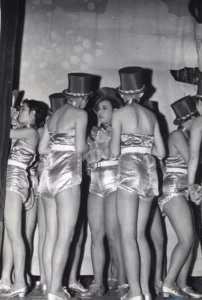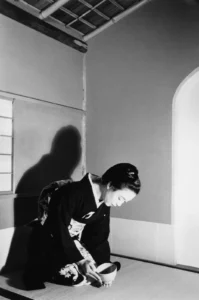‘Thus, teahouses were not places that automatically produced instant friendships or provided sanctuary for the “hodge-podge of humanity” that made the stress of the real world give way to a remarkable sense of serenity and harmony, as some observers have suggested.’ ((Qin Shao, Tempest over Teapots: The Vilification of Teahouse Culture in Early Republican China (The Journal of Asian Studies, 1998) p.1015.))
The concept of the teahouse has drastically changed as a result of modernity; however, this has enabled this type of establishment to survive in a modern world. The consequence of this is that tradition co-exists with modernity, meaning that although the interior of a teahouse might remain traditional, the concept of the teahouse has had to make room for different social standards. Qin Shao states in their article Tempest over Teapots: The Vilification of Teahouse Culture in Early Republican China that Teahouses became a safe haven for people who could not comprehend their changed society which had become fast-paced, and work-driven. Therefore, this enabled the teahouse to form a multi-functional establishment that valued tradition, but also could become community driven. Although there is evidence of Teahouses reaching a limit of how far they will go for their community, this limit does not exceed their ability to create a small space that seems almost immune to modernity.
‘While resting at a teahouse on my way to Chuzenji a poor woman carrying an infant came into the teahouse to ask if she might be allowed to sleep that night in the woodshed, as her house had been carried away and she did not know where her husband was – he might be dead. She said she would beg a little rice from her neighbours, but had nowhere to sleep. The landlord curtly refused this request.’1
This observation from a customer within a teahouse might suggest that it was not the teahouse that changed to conform to its patron’s needs, but it was the community that forced teahouses to become less about class and status, enabling a space to be created which provided a timeless environment for people who were victims to a fast-paced society. ‘The rapid change of that time brought social and political dislocation to many people. Previous class boundaries were being shaken and reconstructed. Teahouses both reflected and shaped such reconstruction.’2
Spaces such as convenience stores which provided the same basic requirements such as consumables and a table to eat on, however, this difference between both establishments is time. Standing at a bench and eating promotes the concept of a rushed environment. It would be uncommon to remain standing at the table once the task of eating was complete. Therefore, what differentiates a social space like the teahouse to others such as the 7-eleven convenience store in Japan, cafes and restaurants around the world is that tearooms normalised the concept of occupying time rather than allowing time to become a construct of these social spaces.

((Pacific Stars and Strips, 7-Eleven is Blooming in Japan (1985) p.19))
‘The teahouse appealed to these and other city dwellers for other reasons as well. It was perhaps one of the most affordable public social spaces. For three to ten copper coins, one could easily pass two to three hours.’3

Modernity brought about a culture of speed and efficiency. Whether that was through travel, work or leisure, many places ensured quick service, disenabling people to waste time. Taking away seats within food based establishments is a product of modernity promoting a time conscious society. Therefore, the resilience of the teahouses allowed its customers to achieve something which modernity has all but erased and that is to harmonise with their surroundings. Being able to sit down and remain stationary for a period of time is perhaps why many people sought teahouses as an escape from society.
- North China Herold, The Typhoon at Nikko (1902) p.966-967. [↩]
- Qin Shao, Tempest over Teapots: The Vilification of Teahouse Culture in Early Republican China (The Journal of Asian Studies, 1998) p.1015. [↩]
- Qin Shao, Tempest Over Teapots: The Vilification of Teahouse Culture in Early Republican China (The Journal of Asain Studies, 1998) p.1018. [↩]



